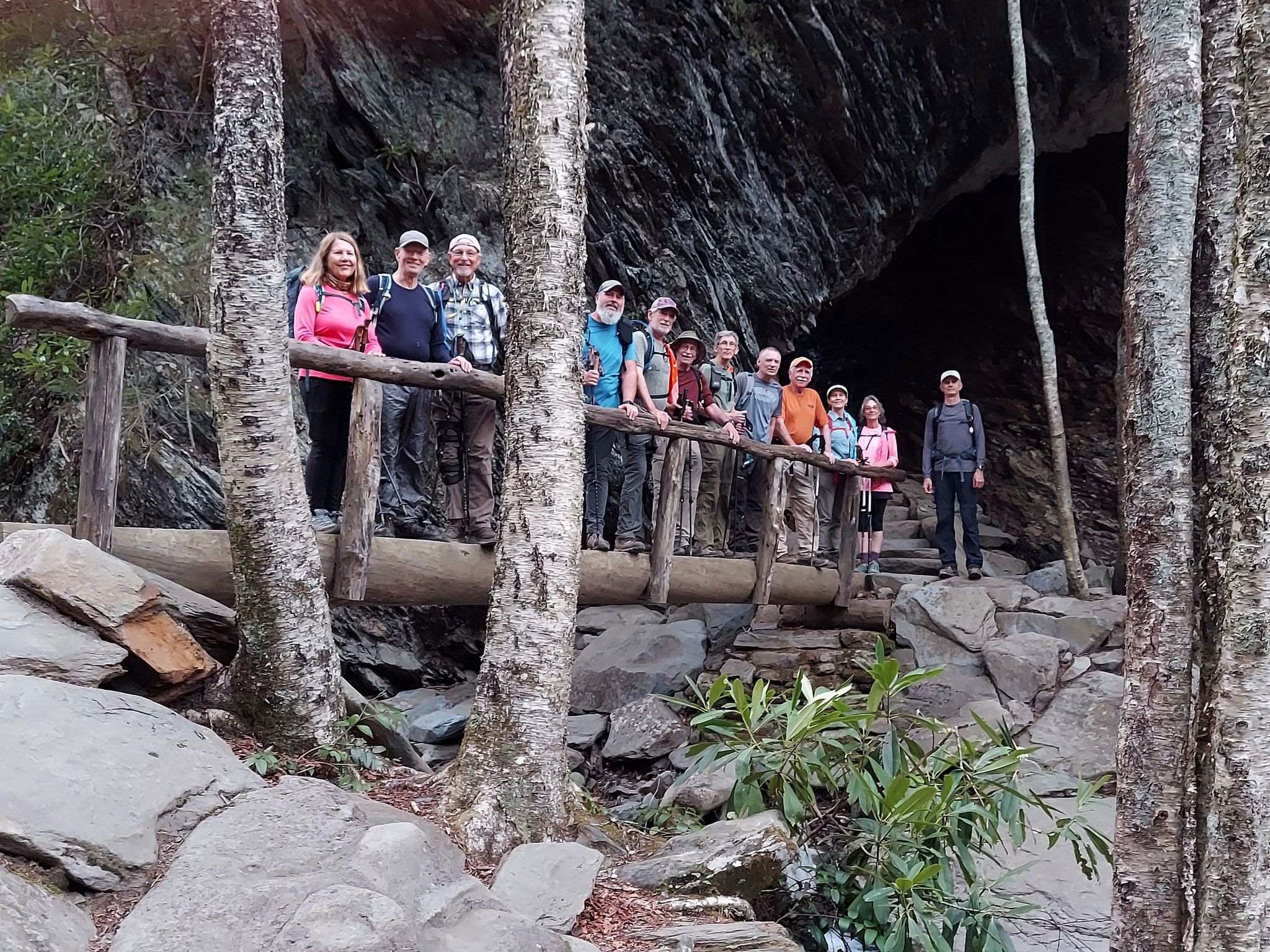
It’s unlikely George and Charlie Barber guessed that anyone would remember their backcountry excursion 100 years later as they led a group of hikers to the summit of Mount Le Conte on a late October day in 1924. But that hike marked the genesis of the Smoky Mountains Hiking Club, a group that is not only still around but finishing out its centennial year with 800 members on its rolls.
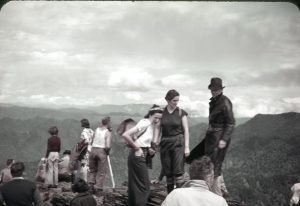
“I’m just amazed that we’ve been around for 100 years and are really still going strong,” said Steve Dunkin, SMHC’s current president.
When SMHC first started, the park whose namesake it shares was still just an idea. President Calvin Coolidge wouldn’t sign the bill allowing the park’s establishment until May 1926, and Congress wouldn’t authorize full development of public facilities until 1934, after the states of Tennessee and North Carolina transferred 300,000 acres of mountain land to the federal government. SMHC’s early members were a critical part of the movement to make that happen.
“A lot of the peaks in the park are named after hiking club people who were also the political movers and shakers,” Dunkin said. “They were the ones that invited the Department of Interior people down from Washington, DC, and hiked them up to Gregory Bald and said, ‘Look at this place. It’s wonderful. This needs to be a national park.’”
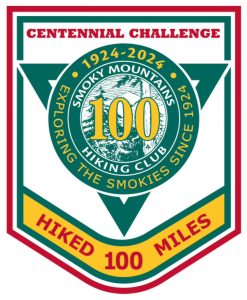
Those early SMHC members loved the mountains that would later form the park, and they were concerned for their future. Every year, logging companies were denuding more of the landscape.
“They wanted to protect it,” Dunkin said.
The club’s protective posture didn’t end with the park’s establishment. During those early decades, SMHC functioned as an advocacy organization, speaking up and even taking direct action at pivotal points in park history. For example, in 1966, SMHC organized the Save Our Smokies Hike to protest the National Park Service’s plan to build a road connecting Bryson City, North Carolina, to Townsend, Tennessee. The event drew 576 people from 22 states to hike the 27-mile proposed route, and the road was never built.
SMHC was also instrumental in the creation of the 2,200-mile Appalachian National Scenic Trail, 72 miles of which fall within the Smokies. The club held its first AT workshop in 1928. Club members marked out the route through the Smokies and then did the hard work of building the trail. Ever since, SMHC members have reliably carried out the intricate maintenance required to keep the trail, its associated shelters, and its privies safe and functional.
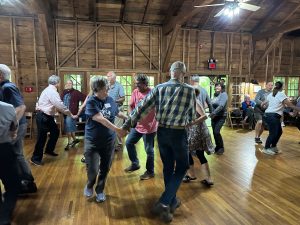
Throughout 2024, SMHC has kept a full schedule of events designed to connect the club back to its historical roots and to set the stage for its journey toward the future. AT maintainers celebrated by reblazing all 72 miles of the trail’s Great Smoky Mountains section with a fresh round of iconic white rectangles. Club volunteers gathered at the Smoky Mountains Hiking Club Cabin—which is located in the park’s Greenbrier area and served as the group’s clubhouse before being turned over to the park service—to perform some needed maintenance, and three special hiking schedules offered in addition to the club’s usual slate of outings commemorated its legacy. Three Conservation History Hikes highlighted significant events in the club’s history, including one excursion following the route of the 1966 Save Our Smokies Hike, while 12 off-trail Legacy Hikes were named for former club members who were instrumental in founding the club or in exploring Great Smoky Mountains National Park. Hikers who completed all ten Centennial Challenge Hikes, outings whose routes were pulled from early editions of the club’s annual handbook, received a commemorative patch. A centennial celebration banquet was held earlier this month.

The centennial year also featured a fish fry and square-dancing night, held in May at the Appalachian Clubhouse in the park’s Elkmont district. The event was an homage to the club’s earlier days, when members gathered regularly to dance the night away. That type of off-trail social component has faded away over recent decades, but May’s event was such a success that Dunkin expects to see more dancing in SMHC’s future.
“Our intent was really just to bring awareness to our past,” said former SMHC President Ken Wise, who was highly involved in the two years of planning that led up to the centennial celebrations.
With the centennial now in the rearview, the club is turning its attention toward what it hopes will be another 100-plus years of caring for the park.
“We’re probably going to become much more involved with the maintenance of the Appalachian Trail,” Wise said. The club’s involvement is already high, but so are the pressures the trail faces. Both visitation to the park and thru-hiking attempts on the AT have surged in recent decades, leaving shelters overcrowded, privies overused, and vulnerable sections of trail eroded. “We’ve got to work on long-range plans on how to deal with this.”
The club also plans to become more vocal when weighing in on environmental issues affecting the park.
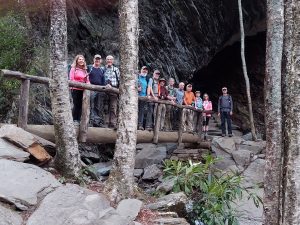
“One of the big issues with the national park now is just encroachment, because we have such a huge visitation issue,” said Dunkin. “That’s great for the economy, but building cabins and roads all around the area, it’s difficult for the park to protect that environment sometimes, and we want to be advocates to support the park. We want to help them maintain the park so that when people drive into Sugarlands or Cades Cove or wherever, it’s going to be that wonderful place that the founders of the club saw it as. And that’s the challenge with the changing world we live in.”
Telling the future is an impossible task, and those early members of SMHC who were instrumental in creating the national park could never have predicted how popular it would become—or the intensity of the pressures it would face. But for the park, having a committed group like SMHC at its side offers assurance that it will have support as it seeks the best way forward.
“As they celebrate their 100th year, Smoky Mountains Hiking Club members continue to make contributions that improve the visitor experience and that protect the park for future generations,” said Boone Vandzura, Chief Ranger at Great Smoky Mountains National Park. “We’re grateful for their dedication to the trails of the Smokies and to the countless volunteer hours they’ve given as an organization.”
Subscribe to get the latest posts sent to your email.
The Great Smokies Welcome Center is located on U.S. 321 in Townsend, TN, 2 miles from the west entrance to Great Smoky Mountains National Park. Visitors can get information about things to see and do in and around the national park and shop from a wide selection of books, gifts, and other Smokies merchandise. Daily, weekly, and annual parking tags for the national park are also available.